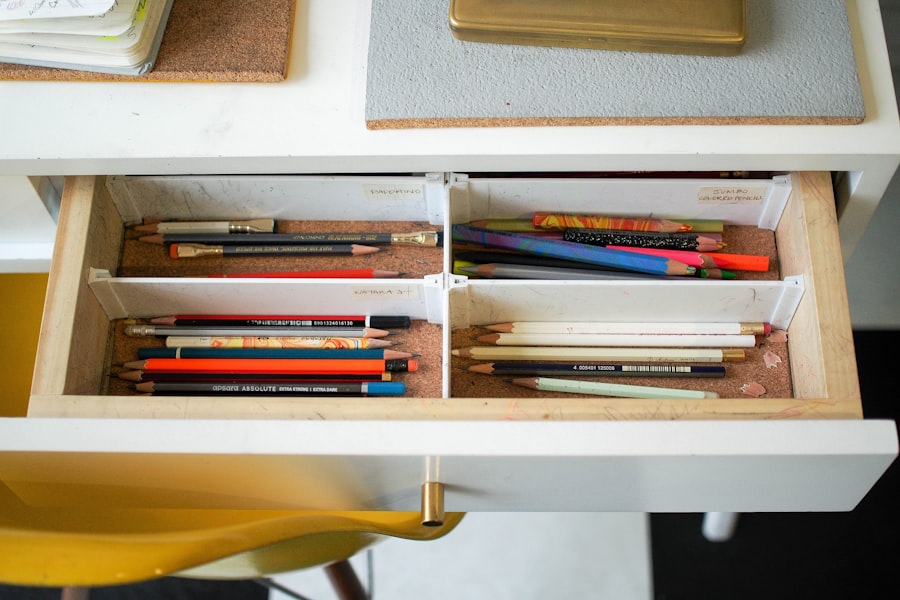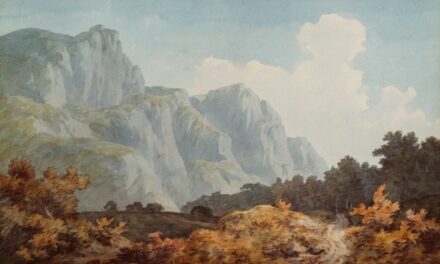The chronicles of creativity stretch back through the annals of human history, weaving a rich tapestry that reflects the evolution of thought, culture, and expression. From the earliest cave paintings in Lascaux to the intricate manuscripts of the Middle Ages, humanity has always sought to document its creative impulses. These early expressions were not merely artistic endeavours; they served as vital records of human experience, capturing the essence of life, spirituality, and the environment.
As societies evolved, so too did the forms and mediums of creativity, leading to the flourishing of art movements that would define entire epochs. The Renaissance marked a pivotal moment in the history of creativity, as artists like Leonardo da Vinci and Michelangelo pushed the boundaries of artistic expression. Their works were not only aesthetically pleasing but also imbued with profound philosophical and scientific ideas.
This period heralded a renewed interest in humanism, where creativity was seen as a reflection of individual potential and intellect. The chronicles of this era are filled with innovations in technique and perspective, laying the groundwork for future generations to explore their own creative capacities. As we journey through time, we witness how creativity has been chronicled in literature, visual arts, music, and beyond, each era contributing its unique voice to the ongoing narrative.
Summary
- The History of Creativity Chronicles:
- Creativity has been a driving force in human history, shaping art, literature, and innovation.
- The Importance of Creativity in Society:
- Creativity is essential for problem-solving, innovation, and cultural expression in society.
- How Creativity Chronicles Inspire and Motivate:
- Creativity Chronicles serve as a source of inspiration and motivation for individuals to pursue their own creative endeavors.
- Exploring Different Forms of Creativity in the Chronicles:
- The Chronicles showcase a diverse range of creative expressions, from visual arts to music and literature.
- The Role of Creativity in Personal Development:
- Engaging with Creativity Chronicles can foster personal growth, self-expression, and a sense of fulfillment.
The Importance of Creativity in Society
Creativity is often heralded as a cornerstone of societal progress. It fuels innovation, drives economic growth, and fosters cultural enrichment. In an increasingly complex world, the ability to think creatively is paramount.
It allows individuals and communities to navigate challenges, envision new possibilities, and devise solutions that may not be immediately apparent. Societies that prioritise creativity tend to be more adaptable and resilient, capable of responding to change with agility and foresight. Moreover, creativity plays a crucial role in social cohesion.
It brings people together, transcending barriers of language and culture. Through collaborative creative processes—be it in art, music, or community projects—individuals can share their stories and experiences, fostering empathy and understanding. This communal aspect of creativity not only enriches cultural landscapes but also strengthens the fabric of society itself.
In essence, creativity is not merely an individual pursuit; it is a collective endeavour that shapes our shared human experience.
How Creativity Chronicles Inspire and Motivate

Creativity chronicles serve as powerful sources of inspiration and motivation for individuals across various fields. They encapsulate the struggles and triumphs of artists, inventors, and thinkers who have dared to push boundaries and challenge conventions. By delving into these narratives, one can glean insights into the creative process—its ebbs and flows, its moments of doubt and bursts of clarity.
Such chronicles remind us that creativity is not a linear path but rather a winding journey filled with obstacles that can ultimately lead to profound breakthroughs. Furthermore, these chronicles often highlight the importance of perseverance in the face of adversity. Many renowned figures faced significant challenges before achieving recognition for their work.
Their stories resonate with aspiring creatives who may feel disheartened by setbacks or self-doubt. By learning about the resilience demonstrated by those who came before them, individuals can find renewed motivation to pursue their own creative aspirations. The chronicles become not just historical accounts but also beacons of hope that illuminate the potential within each person to create and innovate.
Exploring Different Forms of Creativity in the Chronicles
The exploration of creativity through various forms is a testament to the diverse ways in which human expression manifests. From visual arts such as painting and sculpture to performing arts like theatre and dance, each medium offers unique avenues for exploration and communication. Literature, too, stands as a powerful form of creativity, allowing writers to weave intricate narratives that reflect the complexities of human experience.
The chronicles of these forms reveal not only the techniques employed by artists but also the cultural contexts that shape their work. In addition to traditional forms of creativity, contemporary chronicles increasingly recognise the significance of digital art and multimedia expressions. The rise of technology has opened new frontiers for creative exploration, enabling artists to experiment with virtual reality, interactive installations, and digital storytelling.
These innovations challenge conventional notions of art and creativity while expanding the possibilities for engagement with audiences. By documenting these diverse forms within creativity chronicles, we gain a deeper appreciation for the myriad ways in which individuals express their thoughts, emotions, and ideas.
The Role of Creativity in Personal Development
Creativity is intrinsically linked to personal development, serving as a catalyst for self-discovery and growth. Engaging in creative activities allows individuals to explore their identities, express their emotions, and develop critical thinking skills. Whether through painting, writing, or music-making, creative pursuits provide a safe space for experimentation and reflection.
This process fosters a sense of autonomy and confidence as individuals learn to trust their instincts and embrace their unique perspectives. Moreover, creativity encourages adaptability—a vital skill in today’s fast-paced world. As individuals navigate creative challenges, they learn to approach problems from different angles and consider alternative solutions.
This flexibility not only enhances personal growth but also equips individuals with tools that are applicable in various aspects of life, including professional environments. Ultimately, creativity becomes a means through which individuals can cultivate resilience and resourcefulness, essential traits for navigating an ever-changing landscape.
The Influence of Creativity Chronicles on Popular Culture

Creativity chronicles have left an indelible mark on popular culture, shaping trends and influencing societal norms. The stories of iconic artists and innovators often permeate mainstream media, inspiring films, literature, music, and fashion. These narratives serve as cultural touchstones that resonate with audiences across generations, reflecting shared values and aspirations.
For instance, biopics about legendary musicians or artists not only celebrate their contributions but also explore the complexities of their lives—offering insights into the struggles behind their creative genius. Furthermore, creativity chronicles often challenge societal expectations and norms. They provide platforms for underrepresented voices and perspectives that may have been overlooked in traditional narratives.
By amplifying these stories, popular culture becomes more inclusive and reflective of diverse experiences. This shift not only enriches cultural discourse but also encourages individuals to embrace their own unique identities and creative expressions.
How Creativity Chronicles Can Spark Innovation
The chronicles of creativity are fertile ground for innovation; they offer a wealth of ideas that can inspire new approaches across various fields. By studying the successes—and failures—of past innovators, contemporary thinkers can glean valuable lessons that inform their own creative processes. The interplay between historical context and modern challenges often reveals unexpected connections that can lead to groundbreaking ideas.
Moreover, creativity chronicles encourage interdisciplinary collaboration by showcasing how different fields intersect. For instance, the fusion of art and technology has given rise to innovative practices such as digital installations or augmented reality experiences. By drawing inspiration from diverse sources within creativity chronicles, individuals can break down silos between disciplines and foster an environment conducive to innovation.
This cross-pollination of ideas not only enhances creative output but also drives progress in industries ranging from design to science.
The Future of Creativity Chronicles: Trends and Outlook
As we look towards the future of creativity chronicles, several trends are emerging that will shape how we document and engage with creative expression. One notable trend is the increasing emphasis on sustainability within creative practices. Artists are becoming more conscious of their environmental impact and are exploring eco-friendly materials and methods in their work.
This shift reflects a broader societal awareness regarding climate change and sustainability issues. Additionally, technology continues to play a transformative role in how creativity is chronicled and experienced. The rise of social media platforms has democratized access to creative content, allowing artists to share their work with global audiences instantaneously.
This connectivity fosters a sense of community among creatives while also challenging traditional gatekeeping structures within the art world. In conclusion, creativity chronicles are not merely historical records; they are dynamic narratives that inspire individuals across generations. They highlight the importance of creativity in society while serving as catalysts for personal development and innovation.
As we continue to explore different forms of creativity within these chronicles, we gain valuable insights into our shared human experience—one that is rich with potential for growth and transformation in an ever-evolving world.
If you are interested in exploring more about art and creativity, you may want to read an introduction to the painting “Café Terrace at Night, 1888” by Vincent van Gogh. This article provides insights into the famous artwork and the artist’s unique style. You can find the article here.


